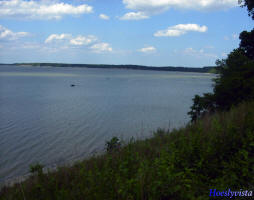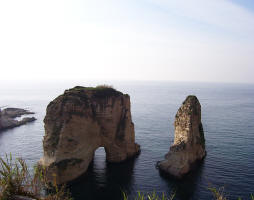 The Red-Dead Sea Water Conveyance Project: A dangerous road to take
The Red-Dead Sea Water Conveyance Project: A dangerous road to take
The Project:
The Dead Sea has been shrinking for the last 40 years by as much as 1m (3.3ft) a year mostly due to water diversion of the Jordan River, mainly by Israel and to a lesser extent Jordan. This decline in the Dead Sea levels causes a variety of environmental, social, and economic harm to the surrounding countries by affecting the tourism industry, and destroying one of the world’s most distinct habitats. The surrounding countries have come to realize the severity of its destruction and have acted accordingly to mitigate its depletion. Israel, Jordan, and the Palestinian Authority have signed a water pact that authorizes the construction of pipeline that will carry brine water from a desalination plant in the Red Sea to the Dead Sea in an effort to replenish it. This scheme, which is expected to cost $250m-$400m (£152m-£244m), will pipe 200 million cubic meters (mcm) of water from the Jordanian city of Aqaba across the gulf from the Israeli resort town of Eilat off the Red Sea through a desalination plant sending brine to the southern-most edge of the Dead Sea. Half will be desalinated at a newly constructed plant, projected to yield 80 to 100 mcm of water annually in Aqaba, at the northern tip of the Red Sea, and the rest will be piped to the Dead Sea to help replenish its waters. Moreover, Israel is to receive around 30-50 mcm of this water, for the benefit of the port city of Eilat and communities in the arid Arava region. Finally, a water transfer deal will also see Israel sell water from the Sea of Galilee to Jordan and desalinated water to the Palestinian territories.
In theory it sounds like a sound plan that will not only help replenish the Dead Sea and restore the fragile ecosystem to its old healthy status, but also provide water to neighboring countries. However, major environmental concerns have been raised about this project, with environmentalists indicating that it would provide only about a 10th of the volume of water required to stabilize the Dead Sea, while also threatening its unique characteristics. This project will cause the formation of algal blooms in the Dead Sea due to the different densities and minerals in the waters of the two seas. This project will also have detrimental effects on the Red Sea, with large water withdrawals severely affecting the coral reefs in Aqaba along with the water table and nutrient levels of the sea. These detrimental effects would have knock on effects on the tourism industry that Jordan heavily relies on at Al Aqaba (e.g. hiking, scuba diving), and the Dead Sea.
Furthermore, Jordan stands to lose most if this project is to be completed, because the pipeline connecting both seas will be constructed completely in Jordanian territory. A credible rupture in the high saline pipeline (running along known active earthquake fault) would cause irreparable damage for a main source of Jordan’s fresh groundwater in Wadi Araba, and increase soil salinity causing a decrease in agricultural production.
Alternative options:
Due to the high environmental risk that would be taken in order to implement such a project, it would be wise to consider alternative options to mitigate the destruction of the Dead Sea. The first alternative would be to release water from the Sea of Galilee to lower the Jordan River and eventually into the Dead Sea. As it stands today, only 50 mcm of water from the Jordan River reaches the Dead Sea as opposed to 1.3 billion cubic meters (bcm) in 1950. Rehabilitating the Jordan River therefore would be a more environmentally safe and a more natural option.
A second option would be to invest more into wastewater treatment. Wastewater treatment represents a valuable and a sustainable water resource that will never run out. Wastewater is constantly available and can add considerable amounts of water to the depleted national water supply. In 2011 wastewater treatment contributed about 115.432 mcm of water per year in Jordan, with the number projected to increase to 262 mcm in the year 2020. In addition wastewater treatment has 3 other benefits that can be exploited:
1. Produces methane that can be harvested and used to produce energy.
2. Reduces the amount of waste released into the environment.
3. Production of natural fertilizer for agriculture.
Therefore, wastewater treatment would not only supply water, but also produce energy and reduce waste production, which are other major problems Jordan is currently facing. Such options seem to offer a more sustainable and a more environmentally friendly option to the Red –Dead Sea conveyance project, which could potentially have catastrophic environmental effects. However, such projects need large investments and commitment from all countries affected.
Conclusion:
Of course, such alternative solutions cannot yet be realized due to the heavy political “baggage” that comes with them. In order to allow the release of water from the Sea of Galilee, which is mainly controlled by Israel, neighboring countries must come to a treaty that allows them to do so. The situation is further complicated with the political tension and strife that is currently plaguing the region, and if matters stay the same, we must brace ourselves for a future without the Dead Sea.
| Contact information |
Amir DAKKAK
(email: am.dakkak@hotmail.com) |
|---|---|
| News type | Inbrief |
| File link |
http://bit.ly/1lHPeIb |
| Source of information | Amir DAKKAK - Arab Water Source |
| Subject(s) | CHARACTERISTICAL PARAMETERS OF WATERS AND SLUDGES , DRINKING WATER , DRINKING WATER AND SANITATION : COMMON PROCESSES OF PURIFICATION AND TREATMENT , ENERGY , HYDRAULICS - HYDROLOGY , INFRASTRUCTURES , NATURAL MEDIUM , POLICY-WATER POLICY AND WATER MANAGEMENT , RISKS AND CLIMATOLOGY , SANITATION -STRICT PURIFICATION PROCESSES , WATER DEMAND |
| Geographical coverage | Jordan, Palestine, Israel |
| News date | 17/03/2014 |
| Working language(s) | ENGLISH |
 you are not logged in
you are not logged in





